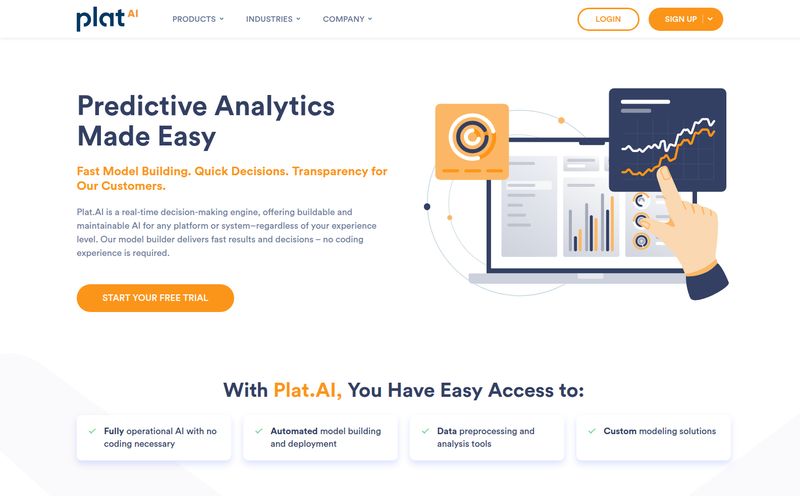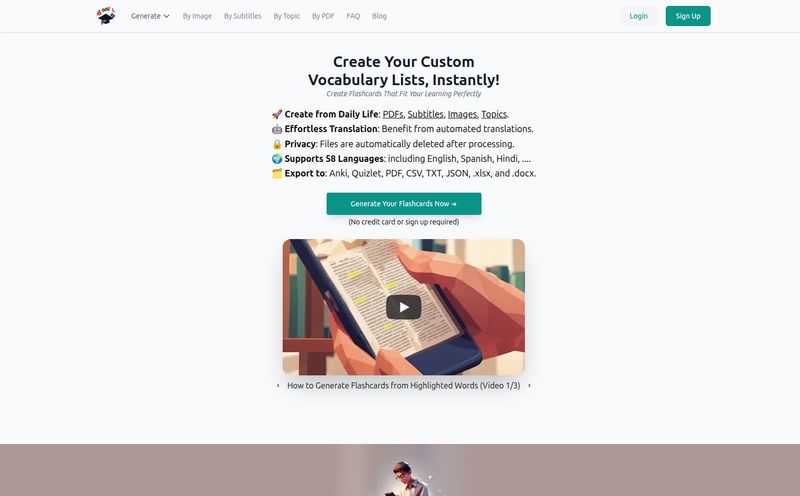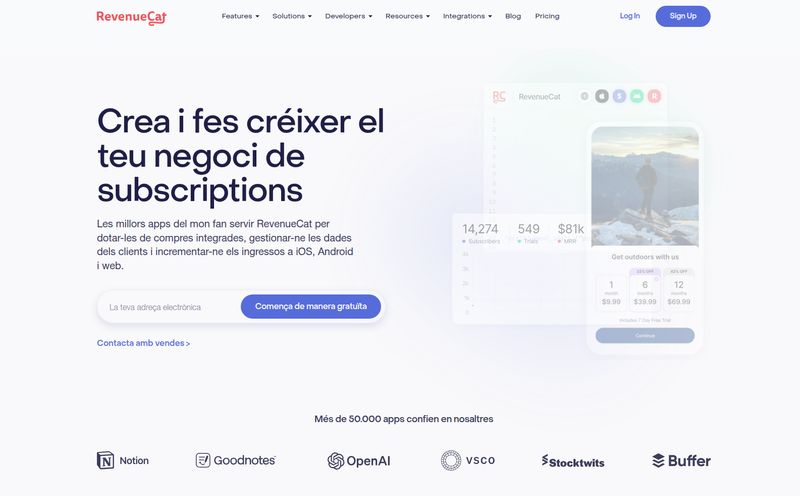As someone who lives and breathes SEO and digital trends, I've seen more AI tools than I can count. Every week there's a new 'revolutionary' platform that promises to change everything. And most of the time? It's just a new wrapper on the same old tech, aimed at the same old markets. It's a bit like the craft beer scene—a million IPAs, but good luck finding a decent stout.
But every now and then, something cuts through the noise. Something that isn't just another productivity hack for Silicon Valley, but a tool that addresses a genuine, gaping hole in the market. That's the feeling I got when I stumbled upon Neoform AI. It stopped my scroll, and I’ve been thinking about it ever since.

Visit Neoform AI
So, What Exactly is Neoform AI?
At its heart, Neoform is building AI models specifically for African dialects. This isn't just about simple translation. We're talking about deep, nuanced audio AI that understands and can replicate the unique cadences, tones, and structures of languages that have been largely ignored by the big players. They're creating tech for Automatic Speech Recognition (ASR), Text-To-Speech (TTS), and even Audio-To-Audio systems.
Think about that. It means creating a voice assistant that doesn't just butcher a name but actually understands a query in Yoruba. It means automated customer support that can speak Hausa. It means content, navigation, and public announcements that feel native, not like a clunky, robotic translation. This isn't just a feature; it’s about digital dignity and accessibility for millions of people.
The Elephant in the Room: AI's Massive Language Gap
For years, we in the tech world have championed AI as a great equalizer. But is it? If your primary language isn't English, Mandarin, or Spanish, the 'AI revolution' can feel like a party you weren't invited to. I've worked on global campaigns where we've hit a brick wall trying to localize content for African markets. Standard tools just fall apart. They miss the idioms, the cultural context, the very soul of the language. They treat these complex dialects as an afterthought, if they consider them at all.
This creates a digital divide that's getting wider. Businesses can't effectively serve their customers. Creators can't reach their full audience. And vital information can't be disseminated effectively. Neoform isn't just building a product; they're building a bridge over this chasm.
A Glimpse Under the Hood: The Core Features
From what I've gathered from their site, Neoform is focusing on a powerful trifecta of audio technologies. This is where the magic really happens.
- Automatic Speech Recognition (ASR): This is the tech that turns spoken language into text. Think transcriptions for podcasts, captioning for videos, or allowing a user to speak to a device. Having ASR that is finely-tuned for Igbo or Hausa is, frankly, massive. It means creators in Nigeria can finally get accurate, automated captions without spending a fortune on manual services.
- Text-To-Speech (TTS): The reverse of ASR, this turns written text into natural-sounding speech. This is huge for accessibility (think screen readers for the visually impaired) and applications like localized GPS navigation or public announcements. I'm really curious to hear how natural their TTS models sound. Getting this right is an art, and if they nail it, it's a home run.
- Audio-To-Audio: This one is particularly interesting. It suggests real-time voice conversion or dubbing. Imagine watching a Nollywood movie and being able to switch the audio to a different local dialect seamlessly. The potential for entertainment and media is just incredible.
Who Is This Actually For?
I can already see a few key groups getting really excited about this. It's not just a niche tool; its' applications are incredibly practical.
For Businesses and Developers
The ability to offer multilingual customer support that actually works could be a huge differentiator for companies operating in Africa. Localized navigation systems for logistics and ride-sharing apps? A game-changer. And with the promise of API access, developers can finally integrate this kind of authentic language support directly into their own products. That's how you build a real ecosystem.
For Content Creators and Media
From podcasters and YouTubers to news outlets, the ability to transcribe, caption, and even dub content accurately and affordably opens up so many doors. It makes content more discoverable (hello, SEO benefits of transcription!) and accessible to a much wider audience, including the hearing impaired.
The Roadmap: A Promising (and Busy) 2024
Neoform has laid out a pretty clear timeline, which I always appreciate. No vague promises of 'coming soon'.
According to their plan, they're rolling out ASR and TTS models for Yoruba, Hausa, and Igbo around July 2024. This is a fantastic starting point, targeting some of the most widely spoken languages in West Africa. Then, in September, they plan to launch a web portal for businesses to access these tools directly. By October, they're looking to release their APIs for developers and, excitingly, start expanding to even more local languages.
It’s an ambitious schedule, but it shows they have a clear vision and are moving deliberately. I'll be watching that October milestone closely to see which languages they add next.
My Honest Take on Neoform AI
No tool is perfect, especially one this new and ambitious. So, putting on my analyst hat, here’s how I see it.
| The Good Stuff (Pros) | Things to Keep in Mind (Cons) |
|---|---|
| It tackles a hugely underserved market. This isn't just another AI tool; it has a powerful, clear mission to promote linguistic inclusivity. | It's highly specialized. If your needs extend beyond African dialects, this obviously won't be your all-in-one solution. |
| The promise of API access is a big deal for developers and tech innovation across the continent. | It's still in development. The roadmap is exciting, but we're looking at features that are still a few months out. It's one to watch, not one you can use today. |
| The range of services—from ASR to TTS—covers a wide array of practical, real-world use cases for businesses and creators. | Performance metrics are not yet public. The real test will be in the accuracy and naturalness of the models, which we can't judge yet. |
What's the Price Tag?
Ah, the million-dollar question. Or, hopefully, a much more reasonable question. Currently, there's no public pricing information on the Neoform AI website. This is pretty standard for a platform at this stage. They have a "Join Our Waitlist" call-to-action, which suggests they're likely in a beta phase or gauging interest before a full launch. I'd expect a tiered pricing model to emerge once the web portal goes live in September—perhaps with different levels for individuals, small businesses, and enterprise users.
FAQs about Neoform AI
- What is Neoform AI?
- Neoform AI is a technology company developing artificial intelligence models, like speech recognition and text-to-speech, specifically for African dialects to improve digital accessibility and create new opportunities.
- What languages will Neoform AI support first?
- According to their public roadmap, they are starting with models for Yoruba, Hausa, and Igbo, with plans to expand to more local languages later in 2024.
- Is Neoform AI free to use?
- There's no pricing information available yet. Given the B2B focus and API access, it will most likely be a paid service, but we'll have to wait for the official launch to know for sure.
- Who is the ideal user for Neoform AI?
- Businesses operating in Africa, software developers, content creators, media houses, and public institutions who need to communicate and create content in local African languages.
- How can I try Neoform AI?
- Right now, the best way is to head to their official website and sign up for the waitlist to be notified of their launch and get early access.
- How is this different from Google Translate?
- While Google provides broad translations, Neoform is focused on creating deep, nuanced audio models (ASR and TTS) that understand the specific phonetics and structure of dialects, aiming for a much more natural and accurate level of interaction than generic tools.
Final Thoughts: A Huge Step in the Right Direction
I'm genuinely excited to see where Neoform AI goes. For too long, the narrative has been about fitting diverse cultures into a monolithic tech framework. A tool like Neoform flips that script. It’s about building the framework to fit the culture. It's a powerful statement that every language deserves to be a first-class citizen in the digital world.
It won't be an easy road, and the real proof will be in the performance of their models. But the mission? It's one I can absolutely get behind. This is the kind of innovation that doesn't just generate traffic or clicks, but creates genuine connection and empowerment. And in my book, that's a trend worth watching.
Reference and Sources
- Neoform AI Official Website (Note: This is the assumed URL based on the brand name)
- "The huge language gap holding back AI voice assistants" - Rest of World - An article discussing the broader context of linguistic disparity in AI technology.



